中国组织工程研究 ›› 2018, Vol. 22 ›› Issue (6): 852-857.doi: 10.3969/j.issn.2095-4344.0058
• 组织工程口腔材料 tissue-engineered oral materials • 上一篇 下一篇
盐酸米诺环素软膏治疗种植体周围炎的可行性
刘 欧,高 祝,李 涛,周 波
- 遵义市妇幼保健院口腔科,贵州省遵义市 563000
Minocycline hydrochloride ointment is available for the treatment of peri-implantitis
Liu Ou, Gao Zhu, Li Tao, Zhou Bo
- Department of Stomatology, Zunyi Municipal Maternal and Child Health Hospital, Zunyi 563000, Guizhou Province, China
摘要:
文章快速阅读:
.jpg)
文题释义:
种植体周围黏膜炎:指发生在口腔种植体周围软组织的可逆炎症,其根本病因是种植体上的细菌微生物,即由于口腔卫生不良,造成种植体周围菌斑堆积,刺激机体产生炎症反应,临床表现为黏膜的红肿、探诊出血甚至溢脓等。
菌斑指数:由Silness和Loe在1964年提出,根据牙面菌斑的厚度记分,用于评价口腔卫生状况和衡量牙周病防治效果。用视诊结合探针的方法检查,检查是用探针轻划牙面,根据菌斑的量和厚度记分。菌斑指数科检查全口牙面,也可检查选定的几颗牙。每颗牙检查4个牙面,即近中颊面、正中颊面、远中颊面以及舌面。每颗牙的记分为4个牙面记分之和除以4,个人记分为每颗牙记分之和除以受检牙数。
背景:近年在牙周袋使用抗生素是预防和治疗种植体周围炎的新方案。
目的:分析盐酸米诺环素软膏治疗种植体周围炎的有效性。
方法:纳入80例种植体周围炎患者,其中男38例,女42例,年龄20-32岁,分2组治疗,试验组(n=40)在牙周袋底部注入盐酸米诺环素软膏,对照组(n=40)在牙周袋底部注入碘甘油,1次/周;同时选择无种植体周围炎患者作为正常对照组(n=40)。治疗4周后,检测3组患者探诊指数、出血指数、菌斑指数、黑色素普雷沃菌、口腔链球菌检出情况,同时统计试验组与对照组临床治疗有效率。
结果与结论:①治疗前,试验组与对照组的探诊指数、出血指数、菌斑指数、黑色素普雷沃菌检出例数、口腔链球菌检出例数均高于正常对照组(P < 0.05),试验组与对照组上述指标比较差异无显著性意义;②治疗4周后,试验组与对照组的探诊指数、出血指数、菌斑指数、黑色素普雷沃菌检出例数、口腔链球菌检出例数均高于正常对照组(P < 0.05),试验组与对照组治疗后的上述指标均低于治疗前(P < 0.05),试验组上述指标均低于对照组(P < 0.05);③试验组治疗后的临床有效率高于对照组(98%,75%,P < 0.05);④结果表明,酸米诺环素软膏可有效治疗种植体周围炎,同时可抑制产黑色素普雷沃菌、口腔链球菌的定植。
中图分类号:
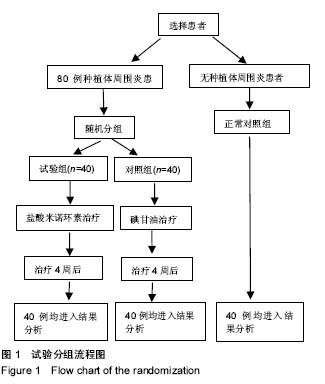
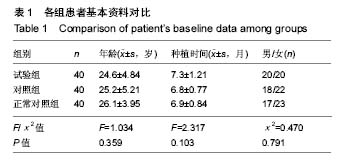
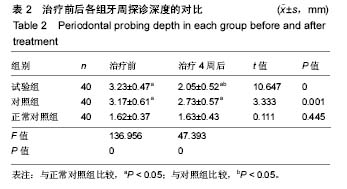
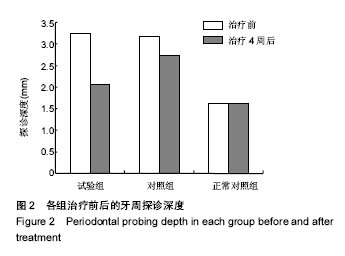
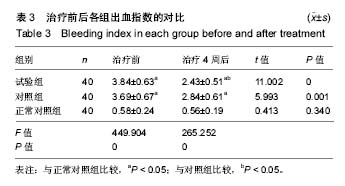
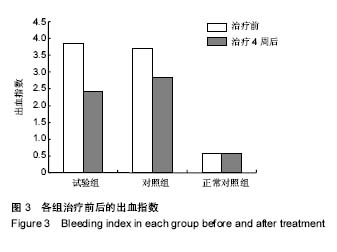
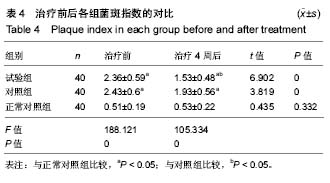
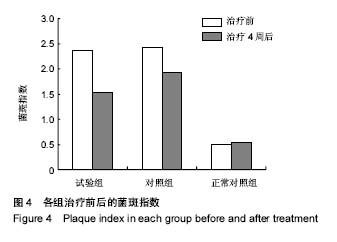
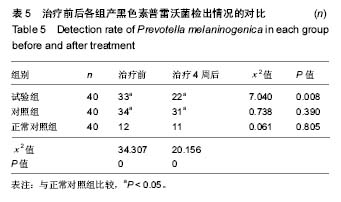
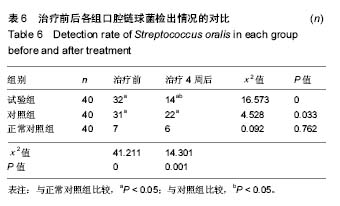
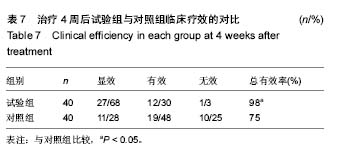
.jpg)